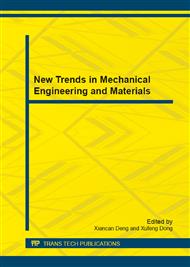p.342
p.346
p.351
p.355
p.360
p.366
p.373
p.378
p.383
DOE Applied to Optimization of Steel Casting
Abstract:
In this paper, DOE method is applied to scheme test plans for designing the casting processes with shrinkage volume information provided by InteCAST. The effect on casting defect by the setting of riser style, riser section, riser height, chill section, chill thickness were studied by the range analysis, and the influences degree of above five factors were compared by the variance analysis. The trend graphs of factor level are drawn to intuitively present the degree of importance of the factor. Optimal process parameters are obtained by using comprehensive analysis and comprehensive score method. A practical exemplification is shown to prove that the proposed method could help designer effeciently obtain a optimal feeding layout.
Info:
Periodical:
Pages:
360-365
Citation:
Online since:
December 2012
Authors:
Price:
Сopyright:
© 2013 Trans Tech Publications Ltd. All Rights Reserved
Share:
Citation:


